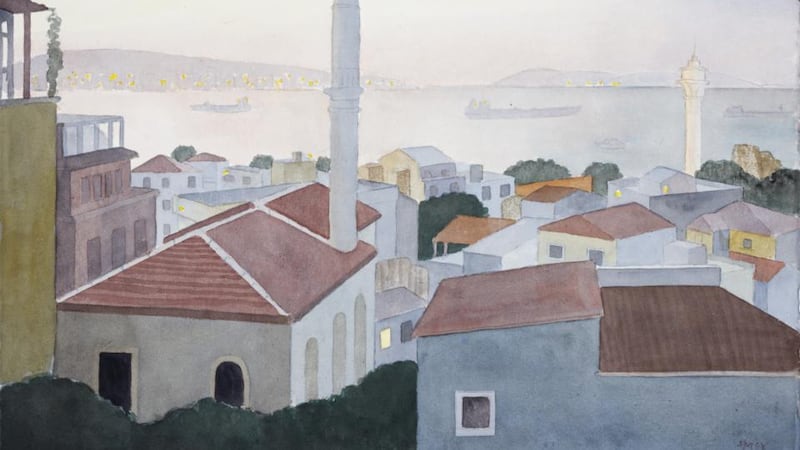Every writer knows the power of a punchy opening. So are you paying attention? Yes, but for how long? It seems that everything is speeding up: plays are preferable to many at 50 minutes with no interval; movies race along at the speed of a fast-paced computer game; and we express ourselves in 140-character tweets. So in an age increasingly defined by the shortening attention span, what happens to art?
The answer is: a great deal of it suffers. Research carried out by various museums and institutes, including the Louvre and the Getty, has discovered that, while 10 years ago we may have spent an entire 30 seconds looking at a painting, now it's down to about four. We give the labels longer (10 seconds), and if the artist turns out to be famous, the picture gets another (brief) look. Even the Mona Lisa , surely the world's most famous painting, only gets about 15 of our seconds.
Suffering arts
Of all the culture sectors, the visual arts suffer most from the increased pace of life and diminished attention spans. Visits to galleries and museums can become little more than a checklist of names. Think of a visit to the National Gallery: yes, I've seen the Caravaggio, clocked the Rembrandt, glanced at the Vermeer, there's Burton – Ireland's favourite painting – done le Brocquy, now it's time for coffee.

We can lose ourselves in music precisely because it takes time to listen to – but give it time, and you can do the same with a painting. The late Mark Rothko was known to spend hours in his studio, gazing at his spare, minimal paintings as the changing light of the passing day caused shifts in colour and tone. That's painting as meditation, painting as a slow, seeping path to grace.
A worldwide movement, Slow Art Day, wants to bring us back to the idea of giving time to art. Slow Art Day takes place on Saturday (see panel), with museums and galleries selecting four or five works and asking visitors to spend 10 minutes on each. Everyone is then invited for coffee to chat about their experiences of looking longer.
Giving 10 minutes to an art work might not sound like much, but it can be harder than you would think. The eye tends to slide off difficult work; perhaps that’s one reason why another study found we give longer to paintings from art history than we do to more challenging contemporary work.
Another is that figurative and landscape paintings can embody and suggest stories, while it can take longer to pull thought and idea from more abstract objects – but if we give those thoughts and ideas time, they can take us to very interesting places.
Slow Art founder Phil Terry established the movement after spending an hour at the Action/Abstraction exhibition at the Jewish Museum in New York in 2008, looking at just one painting: Hans Hofmann's Fantasia (1943). He began to notice things he had never seen before: a drip of paint inspired ideas about the work of that famous drip-painter Jackson Pollock. But as the hour progressed, Terry realised he wasn't looking for answers, rather that he had fallen into a stream of consciousness.
“People usually go to a museum, see as much as they can, get exhausted, and don’t return,” he says. “Slow Art Day energises people.”
At the Royal Hibernian Academy, the Slow Art Day tours will focus on Dorothy Cross's exhibition Connemara . Sarah O'Connell, who will lead the tours, says "it gives people space, no one is telling you what to think, and there's a sense of camaraderie". Last year was the RHA's first as a Slow Art gallery. "We looked at the Skin exhibition," O'Connell remembers. "We all ended up discussing tattoos."
At the Hunt Museum, Dominique Bouchard says people start to notice small details that they could easily miss in the usual scamper around the gallery. "Many of the 2,000 objects we have are very small, and it's fascinating to give them time."
A day for the 'unloved'
In 2013, Slow Art visitors explored Jack B Yeats's An Atlantic Drive (among other objects), but this year, Bouchard says, they are going to pick some smaller works. "It's Slow Art Day for the unloved, the unlooked at, the forgotten art."
In Kilkenny, the Butler Gallery and the National Craft Gallery are teaming up. The Butler’s Bairbre-Ann Harkin says the event is the perfect antidote to the hectic frustrations of lives driven by “tweets, Facebook posts, memos and texts aplenty. We rarely have time to slow down,” she says, “But shouldn’t a visit to a gallery provide some respite from this?”
Slow Art Day is the time to give it a try – it might change the way you look at art forever.
Slow Art Day is on Saturday. slowartday.com
SLOW ART DAY: UPCOMING EVENTS
Butler Gallery and National Craft Gallery, Kilkenny
Slow Art Tours of Stephen McKenna: Drawings and Watercolours ; and Interlace , which includes work from textile artist Caroline Schofield, glass artist Róisín de Buitléar , fashion designer Natalie B Coleman and others. Followed by coffee and conversation. Starts 2.30pm. butlergallery.com and nationalcraftgallery.ie
Hunt Museum, Limerick
Free admission for Slow Art visitors from 10-11am. See selected works from the collection, followed by coffee at 11am. huntmuseum.com
Royal Hibernian Academy, Dublin
Slow Art Tour of Dorothy Cross: Connemara . 11am-2pm. Followed by Slow Food lunch available at Coppa cafe. Booking required. rhagallery.ie


















